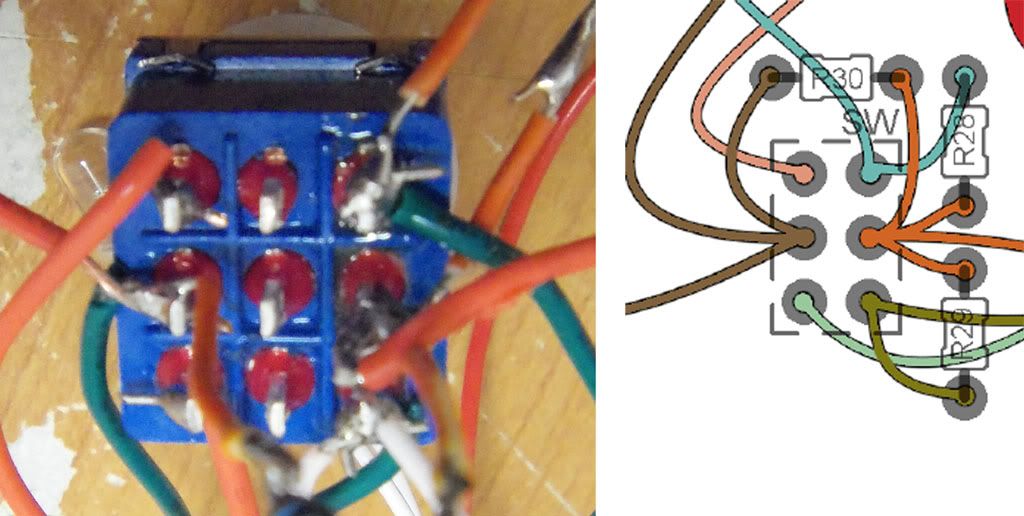IT WORKS!!! Reversed the wiring on my volume and tone pots, hooked up the ground to the sleeves of my in/out and I couldn't be happier. You guys are awesome and I would totally high-five you all if you were here... My neighbors on the other hand do not appreciate your help, as I had my amp cranking the tubes to the point of break-up for at least an hour.
Thanks again everyone!
Thanks again everyone!







 I think I understood your "tunnel" description, just want someone to confirm that I've done it wrong by the picture. If so, cursed be manufacturer of this switch by printing a number "3" in the opposite orientation of your description.
I think I understood your "tunnel" description, just want someone to confirm that I've done it wrong by the picture. If so, cursed be manufacturer of this switch by printing a number "3" in the opposite orientation of your description.